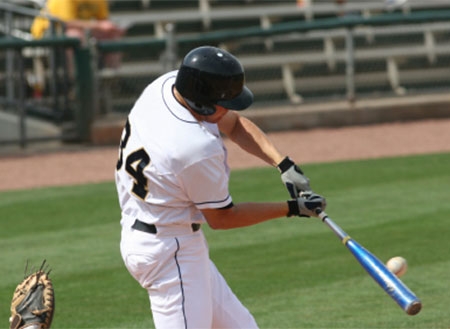With baseball season on the horizon, our shoulder and elbow specialists are already gearing up for the inevitable injuries that will ensue. Physical or occupational therapy is often necessary after any kind of injury. However, for our throwing athletes, a more specified program is necessary to return them to the art that is high level throwing. I don’t pretend to be an expert, but I picked the brain of Josh Howard, one of our trusted physical therapists, who specializes in throwing injuries and the treatment and rehabilitation thereof. Perhaps you’ve seen him working with athletes at the new OAW New Berlin Sports Complex! He provided some insight on the matter.
Josh specifies four categories of consideration in the realm of throwing: range of motion, strength, mechanics, and knowledge. He uses an excellent analogy comparing each of these to a bucket and the force of a throw to water. If the water overflows a given bucket, injury occurs to the structure that takes the brunt of the overflowing force. Most often, these structures are the dreaded medial ulnar collateral ligament (requiring Tommy John surgery to return to high level throwing) or growth plates in our younger athletes but they can also include muscles, tendons, and joints.
What may surprise readers is that the aspects of range of motion, strength, and mechanics do not simply apply to the arm. Rather, consideration should be given to how the trunk, hips, and legs are contributing to the throwing motion because deficits in any one of these areas can be a cause of injury as well. One of the most common issues Josh sees in younger throwing athletes is the lead leg lacking the appropriate flexion to extension pattern, which can be caused by lacking hip mobility, muscle flexibility, or core and/or lower extremity weakness. Though perhaps counterintuitive, you may see an athlete rehabbing a throwing injury by performing exercises such as Single Leg Romanian Dead Lifts with the shoulder held in a certain position for mechanical issues such as this one.
Knowledge is a component that should be shared by all involved parties including the athlete, parents, coaches, physical therapist, and physician. Not only is the teaching of correct mechanics important, but so is the management of pitch volume day to day, week to week, and over the course of the season.
Ultimately, high level throwing is a strenuous motion, even when done correctly. However, mitigating the risk of injury by developing and routinely practicing sound mechanics as well as early intervention when problems arise can keep throwers on the field and competitive throughout the duration of a season. Early intervention is where professionals like our board-certified physicians and physical therapists like Josh come into play.
This blog is written by one of our very own-Morgan. She is a certified athletic trainer working in our clinic with our providers each and every day. She obtained a bachelor's degree in athletic training from Carroll University in Waukesha and a master's degree in Kinesiology from Michigan State University.

